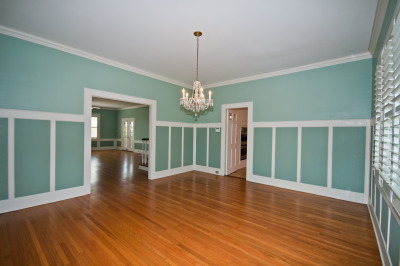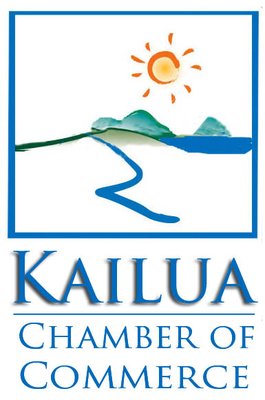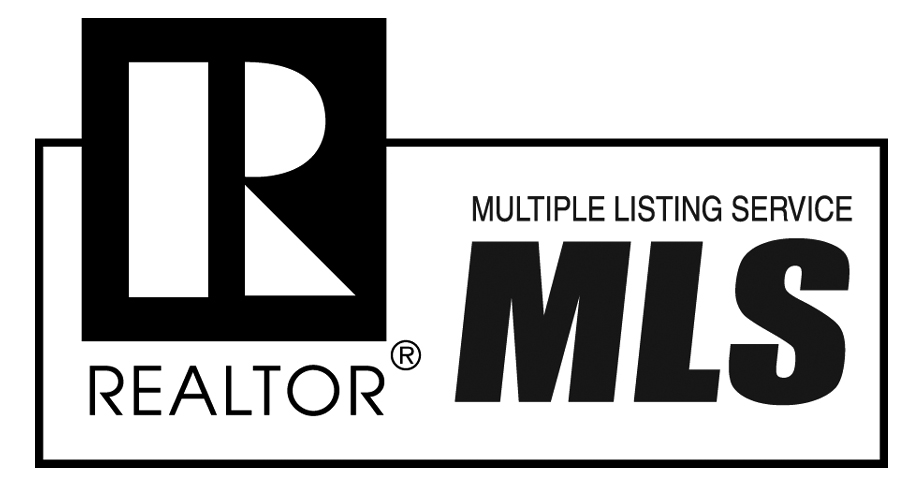Buying An Older or Historic Oahu Home in East Oahu
 Mon, August 27, 2012 by
Mon, August 27, 2012 by  By Yvonne Ahearn (B), Realtor-Broker
By Yvonne Ahearn (B), Realtor-Broker  Mainland home buyers are often a bit surprised at the quality and condition of real estate when they come to Hawaii to look for real estate. This is particularly true when you are looking at older homes, in the more popular areas of East Oahu (Metropolitan Honolulu, Diamond Head, & Kailua, under about $1M or even up to $2M, if within a block or so of the beach or with excellent views.
Mainland home buyers are often a bit surprised at the quality and condition of real estate when they come to Hawaii to look for real estate. This is particularly true when you are looking at older homes, in the more popular areas of East Oahu (Metropolitan Honolulu, Diamond Head, & Kailua, under about $1M or even up to $2M, if within a block or so of the beach or with excellent views.
Older homes, when beautifully remodeled, are very desirable and people will pay a premium for them. I love old homes, having lived in San Francisco and Portland, OR for many years. The charm of these is unmatchable. However, even original or partially-remodeled older homes, depending upon the location, will be very expensive by most mainland standards. Here, most of the home’s value will be in the land and location will be key.
Many single-family homes in East Oahu are vintage or historic. When I say vintage, I mean post-war, built between in the 1940s through the 1960s. When I say historic, I mean 1930s or older. By my estimations, over 1/2 of the total homes in East Oahu are vintage or historic, with the majority vintage, so it is likely that you would come across many of them in your home search. To give you a better idea of home ages, in specific areas of East Oahu, I have compiled some data. It is not exact, just a general estimate of the percentage of older homes which might be available in the area, based on sold data, since 2000 and through late 2007:
| # OF HOMES SOLD, SINCE 1/1/2000, BY EAST O’AHU AREA & DECADE BUILT | |||||||||||||
| LOCATION | PRE- 1900s |
1910 | 1920s | 1930s | 1940s | 1950s | 1960s | 1970s | 1980s | 1990s | 2000s | TOTAL SOLD |
|
| Kailua (TMK 142-144) |
0 | 0 | 11 | 53 | 231 | 866 | 878 | 375 | 220 | 207 | 86 | 2927 | |
|
Kaneohe/Windward |
0 | 0 | 8 | 47 | 90 | 322 | 658 | 491 | 549 | 187 | 86 | 2438 | |
|
Hawaii Kai |
0 | 0 | 0 | 2 | 11 | 15 | 487 | 922 | 417 | 115 | 160 | 2129 | |
|
Diamondhead |
0 | 6 | 143 | 300 | 501 | 903 | 582 | 364 | 367 | 385 | 229 | 3780 | |
|
Metro Oahu/ |
2 | 60 | 292 | 336 | 433 | 780 | 599 | 260 | 170 | 163 | 253 | 3348 | |
| ABOVE E. OAHU AREAS TOTAL |
2 | 66 | 454 | 738 | 1266 | 2886 | 3204 | 2412 | 1723 | 1057 | 814 | 14622 | |
| ISLAND TOTAL | 3 | 69 | 485 | 905 | 1611 | 3839 | 5310 | 4920 | 4319 | 5434 | 3477 | 30372 | |
| E. Oahu as % of Island Total |
67% | 94% | 93% | 82% | 79% | 75% | 60% | 49% | 40% | 19% | 23% | ||
| (Data is from 2000 through 8/29/2007) |
 As you can see, East Oahu has sold about 1/2 of the island’s single family home
As you can see, East Oahu has sold about 1/2 of the island’s single family home
inventory since 2000. And almost 60% of these homes were built in the 1960’s or earlier. So, if you want to live in the most popular East Oahu areas (Honolulu Metro, Diamondhead, Kailua, etc.), except Hawaii Kai, it is likely that you will see a lot of vintage homes in inventory. And if you specifically want a historic home, East Oahu is the best place to find one. If you want a newer home, you can still purchase in East Oahu, particularly in Hawaii Kai or even Kaneohe, but there are other areas of the island that have more new inventory as a percentage of total homes for sale.
So, what should mainland buyers know about these older East Oahu homes? Older homes in East Oahu, as a whole, especially those that have not been remodeled, sometimes have some or all of these characteristics:
1. Single-Wall Construction – Single-wall construction is common in Hawaii. These walls are not constructed with lathe/plaster or sheetrock. There is no insulation in the walls and just one layer of wood is used for both the interior and exterior walls (i.e., they are one and the same), sometimes single-wall has exterior siding and sometimes not. With the Hawaiian lifestyle of open windows and smaller sized lots in some areas, this type of construction may offer less in the way of sound privacy and energy efficiency.
2. No Garages – Prior to the 1960s, neither garages nor carports seemed to be included in the design of many Hawaiian homes. Homes, if they had anything at all for cars, had carports. So you will notice many pre-1960 homes with just carports or later carport additions, and less with garages.
3. Hardwood Floors – Many vintage and historic homes were originally built with and have retained hardwood flooring, which even today, is still very desirable.
4. No Fireplaces/Heating – There are exceptions with some of the historic homes, in cooler, rainer areas of E. Oahu such as Manoa, Dowsett, or Nuuanu, but most historic and vintage homes in Hawaii do not have fireplaces. This does not bother most people, since the weather in Hawaii, so infrequently necessitates home heating. Also, it almost goes without saying, you will rarely find a home with central heating.
5. No Central Air Conditioning – Some of the new and the very expensive remodeled (and insulated) homes will more frequently have central air conditioning, but most older homes don’t have it. Homeowners rely on the pleasant E/NE blowing trade winds and ceiling fans to cool their homes. You will often see split air conditioning units and window units to supplement the trade winds during the summer months. Energy efficiency can be a problem when air is used because of single-wall construction. Many homeowners also install solar attic fans to help reduce the temperature inside the house by circulating and venting the air in the attic.
6. Jalousie Windows – Common also in other places like California & Florida, many, if not most, Hawaiian homes use jalousie windows in at least some rooms. These are the louvered glass slat windows, great for maximizing the island breezes through your window. They are also useful (but not as secure as other window styles) in that slats may be removed to insert window air conditioning units, if you want one. Jalousies are not energy efficient. In the historic house, you will usually see double-hung windows, but sometimes you will see jalousies.
7. Post & Pier Construction – Pre-1960 bungalow and traditional Hawaiian plantation style homes are very often built above the ground, on post and piers. This usually provides easy access to plumbing. I have been told, also, these homes are also easier to protect from ground termites. Sometimes, in the historic homes, you will see homes atop stone foundations, with or without basements.
8. Odd Additions – I have never seen a place quite like O’ahu, with so many odd additions to single-family homes. This is to some extent a function of the “ohana” tradition in Hawaii, where extended family lives together under one roof, and the construction boom in the 40s and 50s when small houses were most common, and also, to another extent, the cost of hiring architects and contractors and the thrifty,” can-do” attitude of many kama’aina. You see many more of these odd-looking additions in the less expensive areas, but they can be found in almost any area.
9. 2 in 1 Homes/ Rental Units – These homes are relatives of the “odd addition” home, but the residences do not always look odd on the outside. Many homes look normal from the outside, but are odd on the inside - split into 2, for extended family or rental purposes. Sometimes this is done by floors, but the design will run the gamut. There are a lot of homes with small rental additions (above carport, in back, etc.), as well. Unless properly permitted as a separate unit, the actual kitchen in these units cannot have a stove – only a sink/refrigerator – and there are other restrictions. Check with your licensed contractor on the details of this. There are also many newly-constructed multi-family homes, usually built after a teardown, which appear from the outside to be a single residence. These sometimes look like giant 2 story McMansions, often made of cement block or stucco construction, and can look out of character with the rest of a vintage neighborhood.
10. Fixers /Tear Downs – Like the other homes described above, fixers and teardown are sometimes seen due to the cost of hiring architects/contractors and the age of homes. It is best to remember that these homes in most areas get the vast majority of their value from the land they are on.
I don’t tell you all of this to scare you away from buying on Oahu. There are many beautifully remodeled vintage and beautifully constructed homes on Oahu. This is especially true if you can afford over $1,000,000.
But if you are looking under $1,000,000, you may have to see a lot of homes to find the right one, and you will be shocked at what some people put on the market with a hefty price tag. When priced right, tear-downs or fixers often sell very quickly, depending upon the location, purchased by speculators or handy homeowners. You will find the best values if you use a little imagination and ignore some of the cosmetic defects, which can be changed.
The good news is that more and more nicely remodeled and very
charming vintage homes around $1M (like the one pictured above) are coming onto the market as they change hands from second to third or later owners. Also, many historic Craftsman bungalows, Tudors and Victorian homes have also often been lovingly restored. These are some beautiful homes! However, you should always remember that, due to the age and variable quality and condition of Hawaiian homes, home inspections here are more important than ever.
If you have any further questions about older properties in East Oahu or Hawaii real estate, please don’t hesitate to contact me at 808-721-8088
All information on this site is believed to be reliable but is expressly not guaranteed. Blog Posts by various authors are the opinions of the author only and do not necessarily reflect the position of Home Shoppe Hawaii or other contributors. This blog does not give legal or tax advice and readers are encouraged to check with licensed professionals for advice on any specific topic and to verify any information herein. Questions? Please contact Yvonne Jaramillo Ahearn at 808-721-8088.
in Buying a Home on Oahu,
Buying a Home on Oahu,  Hawaii Architecture,
Hawaii Architecture,  Historic Oahu Homes
Historic Oahu Homes
 Email Article
Email Article  Print Article
Print Article  historic homes hawaii,
historic homes hawaii,  historic homes honolulu,
historic homes honolulu,  historic homes oahu,
historic homes oahu,  old houses honolulu,
old houses honolulu,  old houses oahu Comments Off
old houses oahu Comments Off  Permalink
Permalink 



